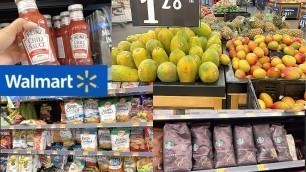

'subscribe us on youtube https://www.youtube.com/c/pakinfotube join us on facebook https://www.facebook.com/adminPakinfotube/ https://pakinfotube.webs.com join us on https://twitter.com/pakinfotube https://plus.google.com/+PakInfoTube Top 15 Calcium-Rich Foods (Many Are Non-Dairy) You have more calcium in your body than any other mineral, and it\'s very important for health. It makes up much of your bones and teeth, and plays a role in cardiovascular health, muscle function and nerve signaling. The recommended daily intake (RDI) of calcium is 1,000 mg per day for most adults. It is also recommended that women over 50 and everyone over 70 get 1,200 mg per day, while children aged 4-18 are advised to get 1,300 mg. However, a large percentage of the population does not get enough calcium from the diet (1). The main foods rich in calcium are dairy products like milk, cheese and yogurt. However, many non-dairy sources are also high in this mineral. These include seafood, leafy greens, legumes, dried fruit, tofu and various foods that are fortified with calcium. Here are 15 foods that are rich in calcium, many of which are non-dairy. 1. Seeds Seeds are tiny nutritional powerhouses. Some of them are high in calcium, including poppy, sesame, celery and chia seeds. For instance, 1 tablespoon (15 grams) of poppy seeds has 126 mg, or 13% of the RDI (2). Seeds also deliver protein and healthy fats. For example, chia seeds are a rich source of plant-based omega-3 fatty acids (3). Sesame seeds have 9% of the RDI for calcium in 1 tablespoon. They also have other minerals, including copper, iron and manganese (4). 2. Cheese Most cheeses are excellent sources of calcium. Parmesan cheese has the most, with 331 mg — or 33% of the RDI — per ounce (28 grams) (5). Softer cheeses tend to have less. One ounce of brie only delivers 52 mg, or 5% of the RDI. Many other varieties fall in the middle, providing about 20% of the RDI (6, 7). As an added bonus, the calcium in dairy products is more easily absorbed by your body than when it comes from plant sources. Many kinds of cheese are also packed with protein, such as cottage cheese. And aged, hard cheeses are naturally low in lactose, making them easier for people with lactose intolerance to digest. Dairy may have additional health benefits as well. A recent study suggests dairy may lower the risk of heart disease (8). Another study found that eating cheese daily was linked to a lower risk of metabolic syndrome, which raises your risk of heart disease, stroke and type 2 diabetes (9). However, remember that full-fat cheese is also high in fat and calories. Most cheeses also have a lot of sodium, which some people are sensitive to. 3. Yogurt Yogurt is an excellent source of calcium. Many types of yogurt are also rich in live probiotic bacteria, which have various health benefits. One cup (245 grams) of plain yogurt contains 30% of the RDI. It also contains vitamin B2, phosphorous, potassium and vitamin B12 (10). Low-fat yogurt may be even higher in calcium, with 45% of the RDI in one cup (11). While Greek yogurt is a great way to get extra protein in your diet, it delivers less calcium than regular yogurt (12). One study linked eating yogurt to better overall diet quality and improved metabolic health. Participants who ate yogurt had lower risks of metabolic diseases, such as type 2 diabetes and heart disease (13). 4. Sardines and Canned Salmon Sardines and canned salmon are loaded with calcium, thanks to their edible bones. A 3.75-ounce (92-gram) can of sardines provides 35% of the RDI, and 3 ounces of canned salmon with bones have 21% (14, 15). These oily fish also provide high-quality protein and omega-3 fatty acids, which are good for your heart, brain and skin (16, 17). While seafood can contain mercury, smaller fish such as sardines have low levels. Not only that, both sardines and salmon have high levels of selenium, a mineral that can prevent and reverse mercury toxicity (18). 5. Beans and Lentils Beans and lentils are high in fiber, protein and micronutrients. They also boast lots of iron, zinc, folate, magnesium and potassium. Some varieties also have decent amounts of calcium. However, winged beans top the chart. A single cup of cooked wing beans has 244 mg, or 24% of the RDI (19). White beans are also a good source, with a cup of cooked white beans providing 13% of the RDI. Other varieties of beans and lentils have less, ranging from around 4–6% of the RDI per cup (20, 21, 22). Interestingly, beans are credited with being one of the reasons that plant-rich diets are so healthy. Research suggests that beans may help lower LDL (the \"bad\") cholesterol levels and reduce the risk of type 2 diabetes (23). -~-~~-~~~-~~-~- Please watch: \"سال 2018 میں دنیا کے 15 امیر ترین ممالک کی فہرست کونسا اسلامی ملک پہلے نمبر پر ہے حیران کن معلومات\" https://www.youtube.com/watch?v=8NMw8mIKryY -~-~~-~~~-~~-~-'
Tags: live news , health tips in urdu , urdu trend , pakistani things , pak info tube , health in urdu , urdu lab , raaz tv , Raaztv , KHUSHAL ZINDGI HAKEEM AHMAD , Desi Totkey Sehat Sub Ke Liye , Arshads Mens Health Channel , Real Health Care In Urdu , Zee Health And Beauty Tips , Urdu.pk , My Help In Health , Health 786 , malumat Tube , Muslim Umma , Non-Dairy Foods High in Calcium , Top 5 Calcium-Rich Foods , The best calcium-rich foods , 5 کھانے جن میں دودھ سے زیادہ کیلشیم موجود
See also:














!['RAW shopping to RAW Dinner Day for Oliang&nomyen [ASMR] MUKBANG 犬が生の肉を食べる[咀嚼音] Dog VLOG'](https://cdn-img01.foodbl0g.com/images/40-m/783/783928_m.jpg)


comments